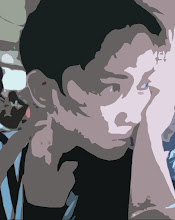This is an assignment in Science of a First Year Student..
John Bardeen (May 23, 1908 – January 30, 1991) was an American physicist and electrical engineer, who won the Nobel Prize in Physics twice: first in 1956 with William Shockley and Walter Brattain for the invention of the transistor; and again in 1972 with Leon Neil Cooper and John Robert Schrieffer for a fundamental theory of conventional superconductivity known as the BCS theory.
Marie Curie (born Maria Skłodowska; also known as Maria Skłodowska–Curie; November 7, 1867 – July 4, 1934) was a physicist and chemist of Polish upbringing and, subsequently, French citizenship. She was a pioneer in the field of radioactivity, the first and only person honored with Nobel Prizes in two different sciences, and the first female professor at the University of Paris.
Victor Francis Hess (June 24, 1883 – December 17, 1964) was an Austrian-American physicist, and Nobel laureate in physics, who with Carl David Anderson discovered cosmic rays.
Antoine Henri Becquerel (December 15, 1852 ; August 25, 1908) was a French physicist, Nobel laureate, and one of the discoverers of radioactivity. He won the 1903 Nobel Prize in Physics for discovering radioactivity.
Gustav Ludwig Hertz (July 22, 1887, Hamburg – October 30, 1975, Berlin) was a German experimental physicist and Nobel Prize winner, and a nephew of Heinrich Rudolf Hertz.
Sir William Lawrence Bragg CH, FRS, (31 March 1890 – 1 July 1971) was an Australian physicist who shared the Nobel Prize in Physics in 1915 with his father Sir William Henry Bragg. He was the director of the Cavendish Laboratory,
Bertram Neville Brockhouse, CC, FRSC (July 15, 1918 – October 13, 2003) was a Nobel prize-winning Canadian physicist. Brockhouse was born in Lethbridge Alberta, and was a graduate of the University of British Columbia (BA, 1947) and the University of Toronto (MA, 1948; Ph.D, 1950).[1] From 1950 to 1962 he carried out research at Atomic Energy of Canada's Chalk River Nuclear Laboratory.
Aage Niels Bohr (IPA: [ˈɔːʊ̯̩ nels ˈb̥oɐ̯ˀ] = AWE-ah) (born June 19, 1922 in Copenhagen) is a Danish physicist and the son of Margrethe and Niels Bohr. Growing up among physicists like Wolfgang Pauli and Werner Heisenberg, he became a notable nuclear physicist in his own right, being awarded the Nobel Prize in Physics in 1975. In 1946, he became an associate at the Niels Bohr Institute of Theoretical Physics at the University of Copenhagen. He served as the director of the institute from 1963 to 1970.

No comments:
Post a Comment